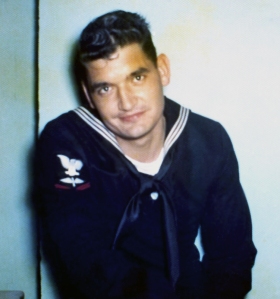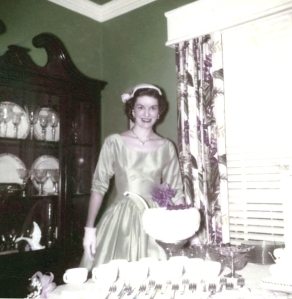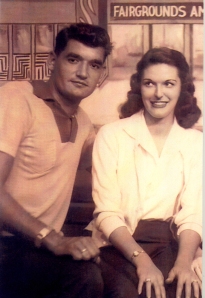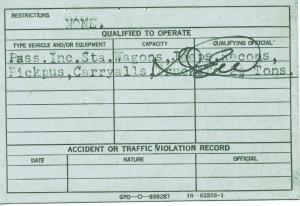 The Douglas C-54 (R5D) “Skymaster”
The Douglas C-54 (R5D) “Skymaster”
The Douglas C-54 (designated R5D by the U.S. Navy) was the military variation of the DC-4 four-engine commercial transport. It was the first four-engine transport to enter USAAF service. The USAAF accepted a total of 1,164 Skymasters from 1942 to 1947. Its maximum load capacity was 28,000 pounds of cargo or 49 passengers.
Although it served with the USAAF as a transport, the C-54 made history when it became the first “official” presidential transport aircraft (Air Force One). Known as “The Sacred Cow,” it was built in 1944 for use by President Franklin D. Roosevelt. One special feature was an elevator behind the passenger cabin to lift the President in his wheelchair in and out of the plane. The passenger compartment included a conference room with a large desk and bullet-proof picture window. President Roosevelt made his first and only flight in this aircraft traveling to Yalta, in the USSR, in February 1945. For security reasons, the tail number on the aircraft was changed for this flight. After Roosevelt’s death in April 1945, the “Sacred Cow” remained in presidential service during the first 27 months of the Truman Administration. On 26 July 1947, President Truman signed the National Security Act of 1947 while on board the “Sacred Cow.” This act established the Air Force as an independent service, making the “Sacred Cow” the “birthplace” of the U.S. Air Force. It was later assigned to other transport duties and was eventually retired in October 1961.
During the Berlin Airlift in 1948, every C-54 the USAF had was pressed into service to supply the isolated city. Many C-54s were later converted into litter-carrying planes for use during the Korean Conflict, returning 66,000 patients to the United States.
In later years, Douglas developed the XC-112, a pressurized version of C-54E Skymaster military transport. It had a longer fuselage, larger rectangular windows in place of circular portholes, and four 2,100 hp Pratt and Whitney R-2800-34 radial engines. After testing, this aircraft entered commercial service as the DC-6 and military service as the C-118 Liftmaster.
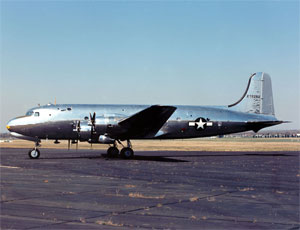
Designation: Douglas C-54 Skymaster (DC-4)
Classification Type: Transport
Contractor: Douglas Aircraft Company – USA
Country of Origin: United States
Initial Year of Service: 1942
Number Built: 1,122
The C for Cargo designation for Army transport aircraft was originally introduced in May of 1924.
There were two series of C-planes, one beginning in 1924 and ending in 1962, and another one beginning in 1962 and continuing to the present day.
The word ubiquitous has been associated with a number of aircraft in wide-scale use during World War II, but the most ubiquitous of all has to be the Douglas DC-3/C-47 Skytrain. This superlative wartime transport aircraft, produced in greater numbers than any other in this category, with almost 11,000 manufactured by the time production ended in 1945, but whatever name you choose, it can be spelled ‘dependable’, for this was the secret of the type’s greatness and enduring service life.
Its design originated from the DC-2/DST/DC-3 family of commercial transports that followed in the wake of the DC-1 prototype which flew for the first time on 1 July 1933. The US Army, had gained early experience of the basic aircraft after the acquisition of production DC-2s in 1936, followed by more specialised conversions for use as cargo and personnel transports. In August 1936 the improved DC-3 began to enter service with US domestic airlines, its larger capacity and enhanced performance making it an even more attractive proposition to the US Army, which very soon advised Douglas of the changes in configuration which were considered desirable to make it suited for operation in a variety of military roles. These included the provision of more powerful engines, a strengthened rear fuselage to cater for the inclusion of large cargo doors, and reinforcement of the cabin floor to make it suitable for heavy cargo loads. Much of the bagic design work had already been completed by Douglas, for a C-41 cargo prototype had been developed by the installation of 1,200 hp (895 kW) Pratt & Whitney Twin Wasp engines in a C-39 (DC-2) fuselage. Thus, when in 1940 the US Army began to issue contracts for the supply of these new transport aircraft under the designation C-47, the company was well prepared to meet the requirements and to get production under wily. The only serious problem was lack of productive capacity at Santa Monica, where European demands for the DB-7 light bomber had already filled the factory floor, resulting in the C-47 being built in a new plant at Long Beach, California.
Initial production version was the C-47, of which 953 were built at Long Beach, and since the basic structural design remained virtually unchanged throughout the entire production run, this version will serve for a description of the structure and powerplant. Of all-metal light alloy construction, the cantilever monoplane wing was set low on the fuselage, and provided with hydraulically operated split type trailing-edge flaps. The ailerons comprised light alloy frames with fabric covering. The fuselage was almost circular in cross-section. The tail unit was conventional but, like the ailerons, the rudder and elevators were fabric- covered. Pneumatic de-icing boots were provided on the leading edges of wings, fin and tailplane. Landing gear comprised a semi-retractable main units which were raised forward and upward to be housed in the lower half of the engine nacelles, with almost half of the main wheels exposed. The powerplant of the C-47 comprised two Pratt & Whitney R-1830-92 Twin Wasp engines, supercharged to provide an output of l,050 hp (783 kW) at 7,500 ft (2285 m), and each driving a three-blade constant-speed metal propeller. The crew consisted of a pilot and co-pilot/navigator situated in a forward compartment with the third member, the radio operator, in a separate compartment.
The all-important cabin could be equipped for a variety of roles. For the basic cargo configuration, with a maximum load of 6,000 Ibs (2722 kg), pulley blocks were provided for cargo handling and tie-down rings to secure it in flight. Alternative layouts could provide for the transport of 28 fully-armed paratroops, accommodated in folding bucket type seats along the sides of the cabin or for 18 stretchers and a medical team of three. Racks and release mechanism for up to six parachute pack containers could be mounted beneath the fuselage, and there were also under fuselage mountings for the transport of two three-blade propellers.
The first C-47s began to equip the USAAF in 1941, but initially these were received only slowly and in small numbers, as a result of the establishment of the new production line at Long Beach which, like any other, needed time to settle down to routine manufacture. With US involvement in World War II in December 1941, attempts were made to boost production, but in order to increase the number of aircraft in service as quickly as possible DC-3s already operating with US airlines, or well advanced in construction for delivery to operators, were impressed for service with the USAAF.
As Douglas began to accumulate contracts calling for production of C-47s in thousands, it was soon obvious that the production line at Long Beach would be quite incapable of meeting requirements on such a large scale, so a second production line was established at Tulsa, Oklahoma. The first model to be built at Tulsa was the second production version, the C-47A, which differed from the C-47 primarily by the provision of a 24 volt, in place of a 12 volt electrical system. Tulsa was to build 2,099 and Long Beach 2,832 of the type, 962 of them being delivered to the RAF which designated them Dakota IIIs. Last of the major production variants was the C-47B, which was provided with R-1830-90 or -90B engines that had two-stage superchargers to offer high altitude military ratings of 1,050 hp (783 kW) at 13,100 ft (3990 m) or 900 hp (671 kW) at 17,400 ft (5305 m) respectively. These were required for operation in the China-Burma-India (CBI) theatre, in particular for the ‘Hump’ operations over the 16,500 ft (5030-m) high Himalayan peaks, carrying desperately needed supplies from bases in India to China. Long Beach built only 300 of the model, but Tulsa provided 2,808 C-47Bs plus 133 TC-47Bs which were equipped for service as navigational trainers. The UK was to receive a total of 896 C-47Bs, which in RAF service were designated Dakota IV.
The availability of such large numbers, in both US and British service, meant that it was possible to begin to utilise the C-47s on a far more extensive basis. The formation in mid-1942 of the USAAF’s Air Transport Command saw the C-47s’ wide-scale deployment as cargo transports carrying an almost unbelievable variety of supplies into airfields and airstrips which would have been complimented by the description ‘primitive’. Not only were the C-47s carrying in men and materials, but were soon involved in a two-way traffic, serving in a casualty-evacuation role as they returned to their bases. These were the three primary missions for which these aircraft had been intended when first procured (cargo, casualty evacuation and personnel transports). However, their employment by the USAAF’s Troop Carrier Command from mid-1942, and the RAF’s Transport Command, was to provide two new roles, arguably the most important of their deployment in World War II, as carriers of airborne troops. The first major usage in this capacity came with the invasion of Sicily in July 1943, when C-47s dropped something approaching 4,000 paratroops. RAF Dakotas of Nos. 31 and 194 Squadrons were highly active in the support of Brigadier Orde Wingate’s Chindits, who infiltrated the Japanese lines in Burma in an effort to halt their advance during the winter of 1942-3, their only means of supply being from the air. Ironically, Wingate (by then a major general) died on 24 March 1944 when a Dakota in which he was a passenger crashed into cloud camouflaged jungle-clad mountains.
The other important role originated with the C-53 Skytrooper version, built in comparatively small numbers as the C-53B/-53C/-53D. Seven C-53s supplied to the RAF were redesignated Dakota II. These were more nearly akin to the original DC-3 civil transport, without a reinforced floor or double door for cargo, and the majority had fixed metal seats to accommodate 28 fully-equipped paratroops. More importantly, they were provided with a towing cleat so that they could serve as a glider tug, a feature soon to become standard with all C-47s, and it is in this capacity that they served conspicuously in both USAAF and RAF service during such operations as the first airborne invasion of Burma on 5 March 1944 and the D-Day invasion of Normandy some three months later. In this latter operation more than 1,000 Allied C-47s were involved, carrying paratroops and towing gliders laden with paratroops and supplies. In the initial stage of this invasion 17,262 US paratroops of the 82nd and 101st Airborne Divisions and 7,162 men of the British 6th Airborne Division were carried across the English Channel in the greatest airlift of assault forces up to that time. Not all, of course, were carried in or towed by C-47s, but these aircraft played a most significant role in helping to secure this first vital foothold on European soil. In less than 60 hours C-47s alone airlifted more than 60,000 paratroops and their equipment to Normandy.
Other C-47 variants of World War II included the XC-47C, prototype (serial 42-5671) of a projected version to be equipped as a floatplane or, as was the prototype, with convertible amphibious floats of all-metal construction, these single-step twin Edo Model 78 floats each had two retractable wheels, and housed a 300 US gallon (1136 litre) fuel tank. While this version was not built as such by Douglas, a small number of similar conversions were made by USAAF maintenance units for service in the Pacific. Douglas were also contracted to build 131 staff transports under the designation C-117, these having the airline-standard cabin equipment of a commercial DC-3, plus the improvements which were current on the C-47. Their numbers, however, had reached only 17 (one C-ll7B built at Long Beach and 16 C-117As from Tulsa) when VJ-Day brought contract cancellation. The requirement for a large-capacity high-speed transport glider, to be towed by a C-54, resulted in experimental conversion of a C-47 to serve in this role under the designation XCG-17. Early tests had been conducted with a C-47 making unpowered approaches and landings to confirm the feasibility of the project, followed by a series of flights in which one C-47 was towed by another. For take-off the towed aircraft used some power, but shut down its engines when airborne. Conversion of a C-47 to XCG-17 configuration began after completion of these tests, with engines, propellers and all unnecessary equipment removed, and the forward end of the engine nacelles faired over. This was undoubtedly aerodynamically inefficient, and contributed to a reduction in performance of the XCG-17, but it was a USAAF requirement that any production aircraft should be capable of easy reconversion to powered C-47s. Despite any inefficiency the the embryo cargo glider had a successful test programme, demonstrating a towed speed of 290 mph (467 km/h), stalling speed of only 35 mph (56 km/h) and a glide ratio of 14:1. Payload was 14,000 lbs (6350 kg), permitting the transport of 40 armed paratroopers. No production aircraft were built, however, as a result of changing requirements.
In addition to the C-47s which served with the USAAF and the RAF, approximately 600 were used by the US Navy. These comprised the R4D-1(C-47), R4D-3 (C-53), R4D-4 (C-53C), R4D-5 (C-47A), R4D-6 (C-47B) and R4D-7 (TC-47B). US Navy and US Marine Corps requirements resulted in several conversions with designations which include the R4D-5E/-6E with special-purpose electronic equipment; the winterised and usually ski-equipped R4D-5L/-6L; the R4D-4Q/-SQ/-6Q for radar countermeasures; cargo versions re-equipped for passenger carrying as the R4D-5R/-6R; the air-sea warfare training R4D-5S/-6S; the navigational training R4D-5T/-6T; and the VIP-carrying R4D-5Z/-6Z. R4Ds were used initially by the Naval Air Transport Service that was established within five days of the attack on Pearl Harbour, equipping its VR-1, VR-2 and VR-3 squadrons, and soon after this by the South Pacific Combat Air Transport Service which provided essential supplies to US Marine Corps units as they forced the Japanese to vacate islands which stretched across the seas that led like stepping stones to that nation’s home islands.
In addition to US production, the type was built in the USSR as the Lisunov Li-2 (2,000 examples or more) and in Japan as the Showa (Nakajima) L2D (485 examples).
C-47s had been involved from the beginning to the end of World War II, and that is but a small portion of their history in both military and civil service. Since VJ-Day military C-47s have supported the Berlin Airlift, Korean and Vietnam wars, to mention only major operations. It would not be too far from the truth to suggest that in the 42 years to 1982 there have not been many military actions or major civil disasters in which the enduring C-47 has not played some part.
Specifications – (Douglas DC-3/C-47A Skytrain):
Dimensions: Span 95 ft 0 in (28.96 m); length 64 ft 2 1/2 in (19.57 m); height 16 ft 11 in (5.16 m); wing area 987.0 sq ft (91.69 sq m).
Three Seat Military Transport, Paratroop Carrier & Glider Tug Accommodation
Crew: Pilot, Co-pilot/Navigator (side-by-side with dual controls) and Radio Operator
The Douglas Aircraft Company Incorporated based on the DC-2 design by Donald W. Douglas
Manufacturer: The Douglas Aircraft Company Incorporated with factories in Santa Monica (California), Long Beach (California), Tulsa (Oklahoma) and Oklahoma City (Oklahoma)
Powerplant: DC-3) Two 1,000 hp (746 kW) Wright GR-1820-G102A Cyclone or 1,100 hp (820 kW) Wright GR-1820-G202A 9-cylinder or two 1,200 hp (895 kW) Pratt & Whitney R-1830-S1C3G Twin Wasp 14-cylinder radial engines. One oil tank of 29.25 US Gallons (110.5 litres) was located in each nacelle. (C-47 typical) Two Pratt & Whitney R-1830-92 Twin Wasp 14-cylinder two-row air-cooled geared and supercharged radial engines rated at 1,200 hp (895 kW) for take-off and 1,050 hp (793 kW) at 7,500 ft (2285 m) driving three-bladed Hamilton Standard constant speed propellers. One oil tank of 29 US Gallons (109.6 litres) was located in each nacelle.
Performance: Maximum speed 229 mph (369 km/h) at 7,500 ft (2285 m); cruising speed 185 mph (298 km/h) at 10,000 ft (3050 m); stalling speed 67 mph (107.8 km/h); service ceiling 23,200 ft (7070 m); climb to 10,000 ft (3050 m) in 9 minutes 36 seconds; initial rate of climb 1,130 ft (345 m) per minute.
Fuel: (DC-3 civil) Two main fuel tanks were located forward of the centre-section spar each with a capacity of 210 US Gallons (794 litres) and two auxiliary fuel tanks aft of the spar each with a capacity of 201 US Gallons (760 litres). (C-47 military) Two main fuel tanks wer located forward of the centre-section spar each with a capacity of 202 US Gallons (763.7 litres) and two auxiliary fuel tanks aft of the spar each with a capacity of 200 US Gallons (756.2 litres). Each engine was served by a separate fuel system but cross-feed permits both engines to be supplied by either set of tanks in case of an emergency. Some military aircraft had provision for a single auxiliary fuel tank in the fuselage.
Range: 1,500 miles (2414 km) on normal fuel. Range of 2,125 miles (3420 km) with maximum fuel.
Empty 16,970 lbs (7698 kg) with a maximum take-off weight of 26,000 lbs (11793 kg); useful load 8,600 lbs (3904 kg); wing loading 25.3 lbs/sq ft (123.5 kg/sq m); power loading 12 lbs/hp (5.45 kg/hp).
Wing Span: 117ft. 6in.; Length: 93ft. 10in.; Height: 27ft. 6in.
Links:
href=”http://www.pilotfriend.com/photo_albums/timeline/ww2/2/Douglas%20DC3.htm”>http://www.pilotfriend.com/photo_albums/timeline/ww2/2/Douglas%20DC3.htm
http://www.militaryfactory.com/aircraft/detail.asp?aircraft_id=110
http://www.theaviationzone.com/factsheets/c54.asp
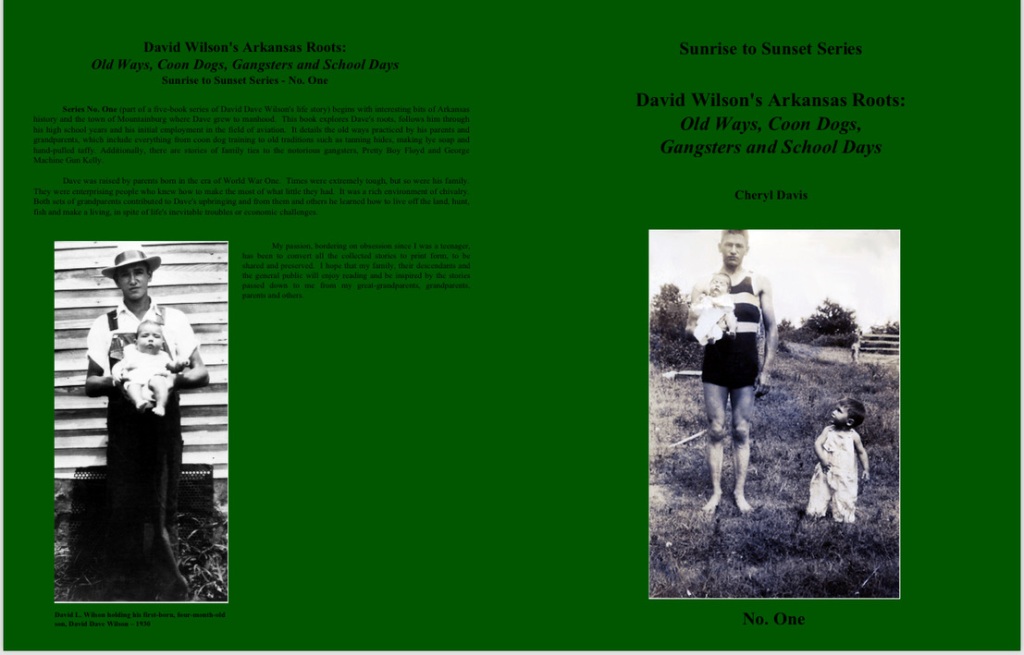


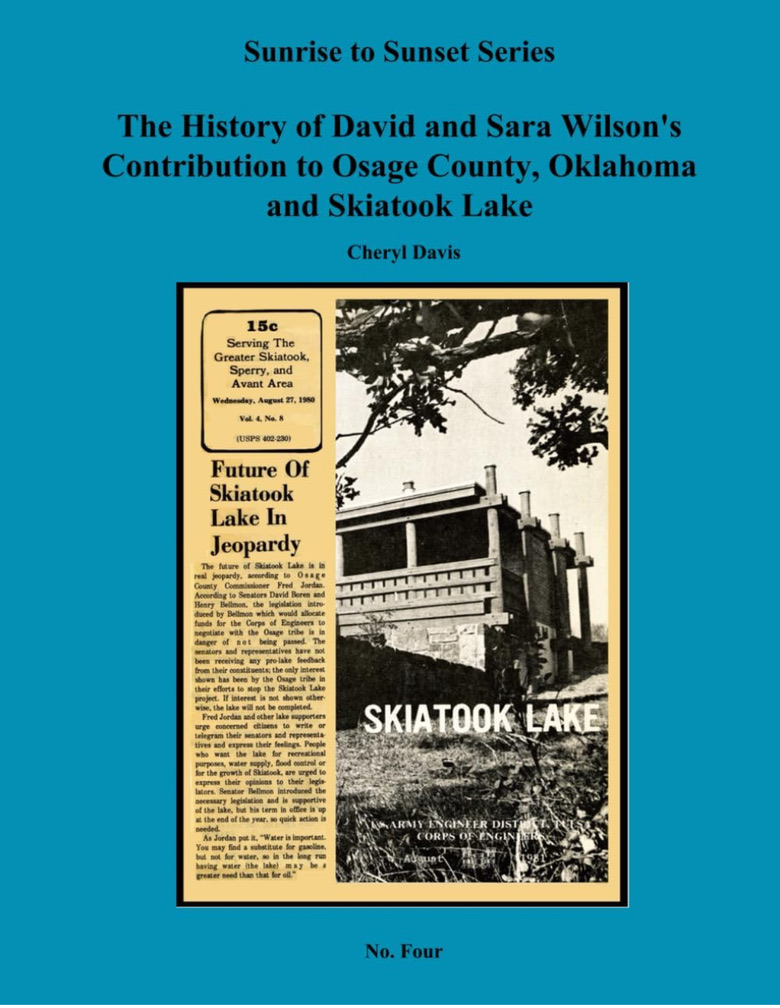




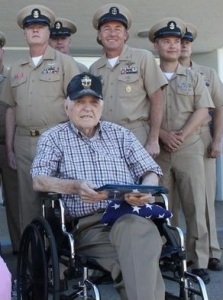
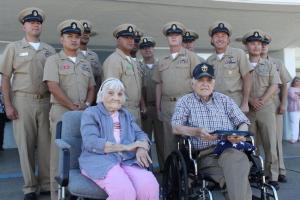






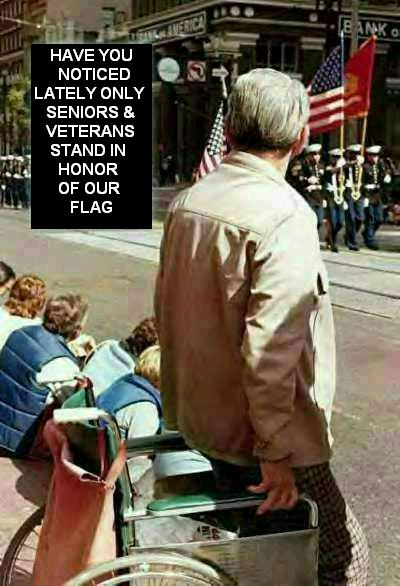 That flag is more than just a piece of cloth.
That flag is more than just a piece of cloth.
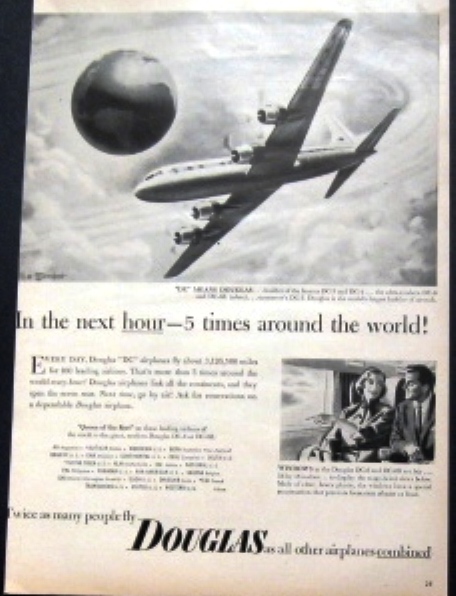
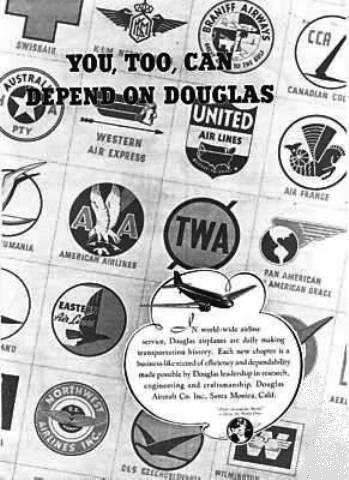 You too CAN depend on Douglas!
You too CAN depend on Douglas!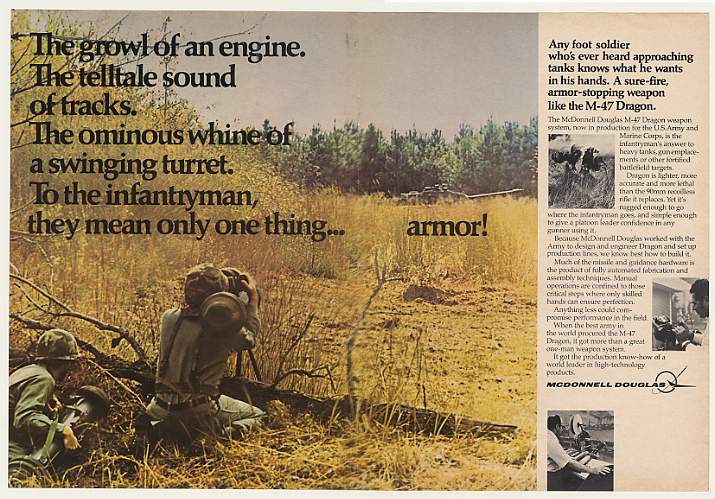



 The Douglas C-54 (R5D) “Skymaster”
The Douglas C-54 (R5D) “Skymaster”
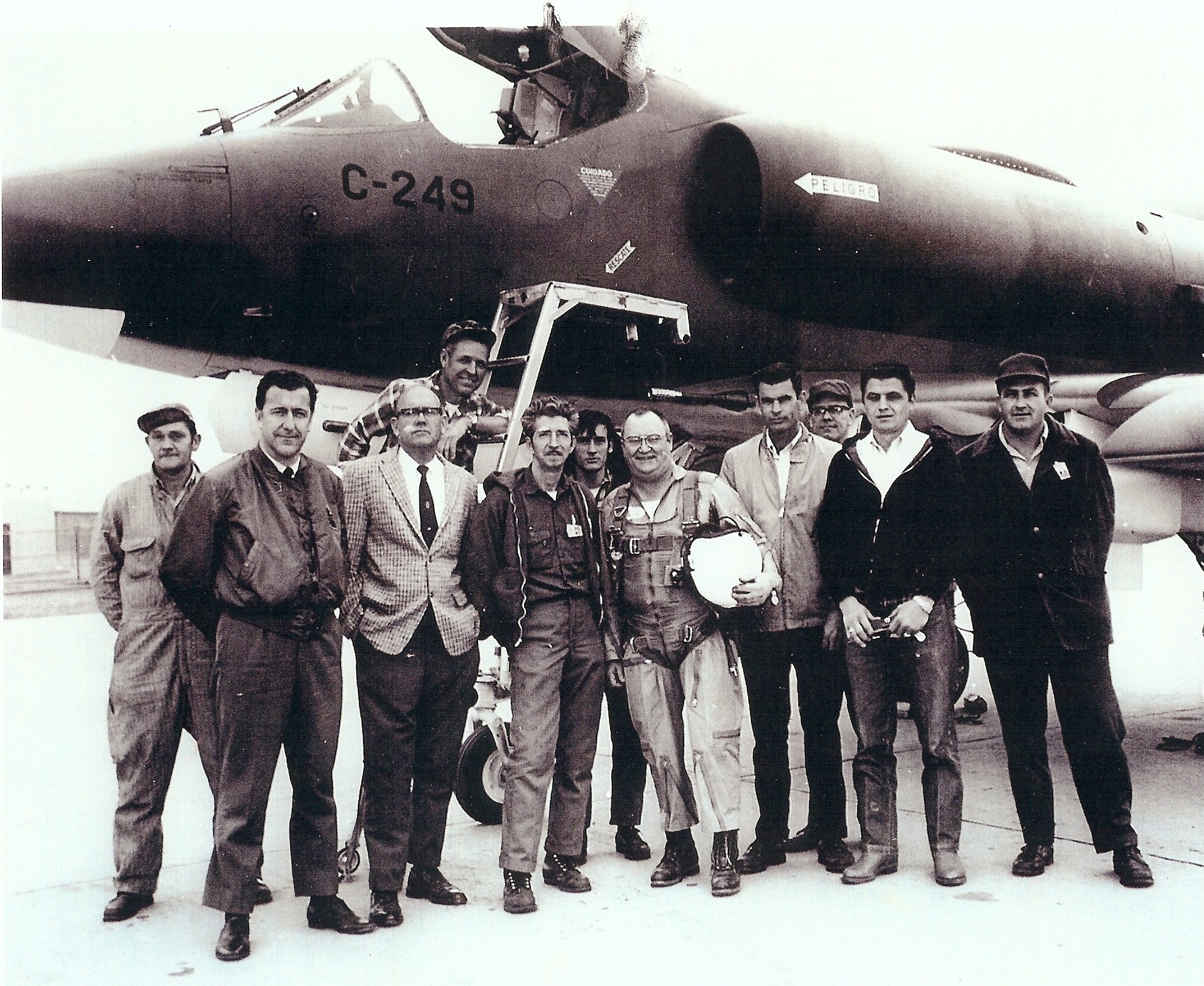 (Dave Wilson not pictured here)
(Dave Wilson not pictured here)









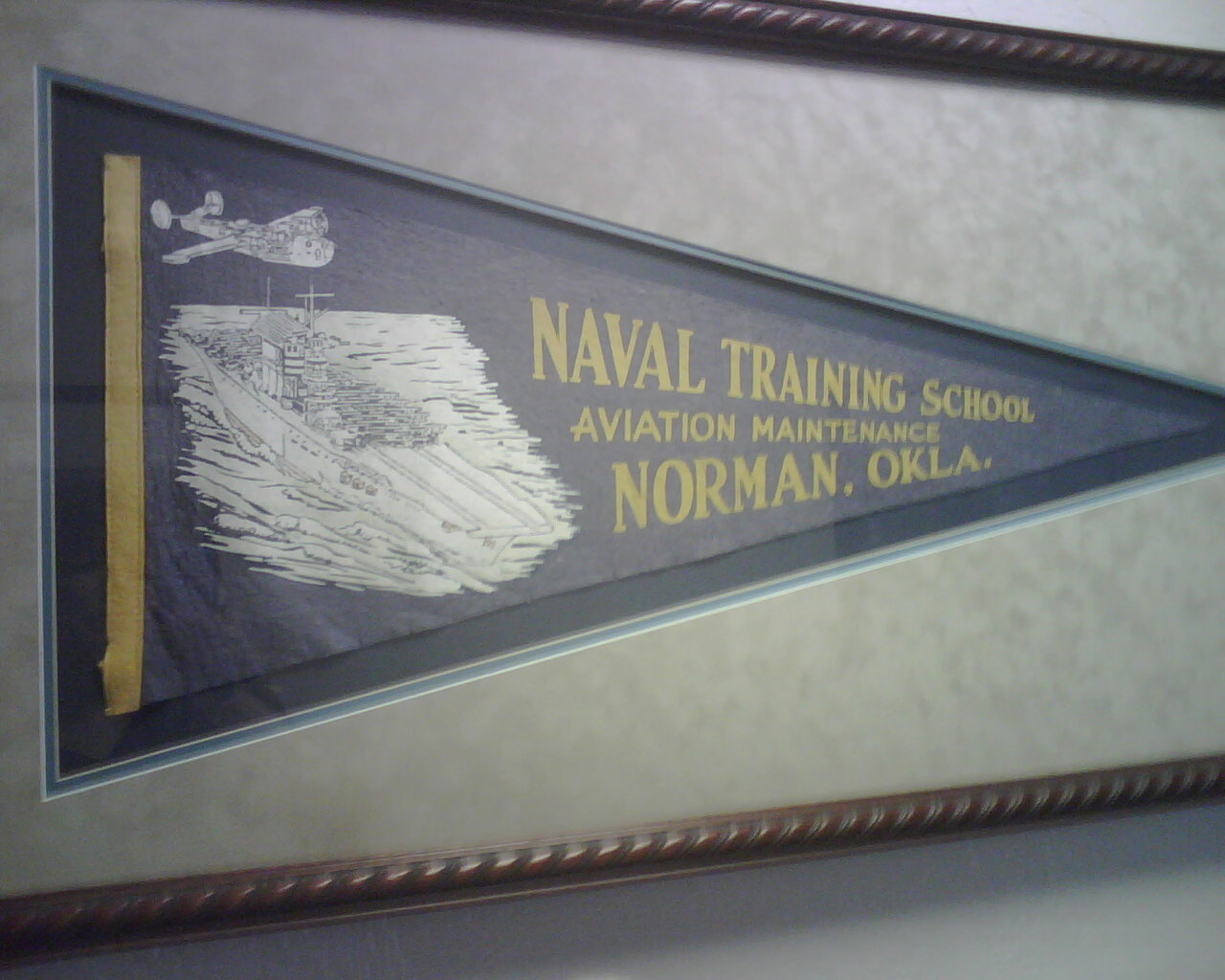
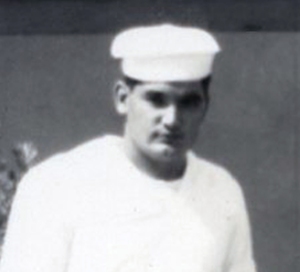

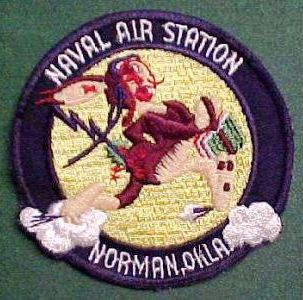 Original, and very rare Norman NAS patch
Original, and very rare Norman NAS patch A rare Naval Air Station banner
A rare Naval Air Station banner



